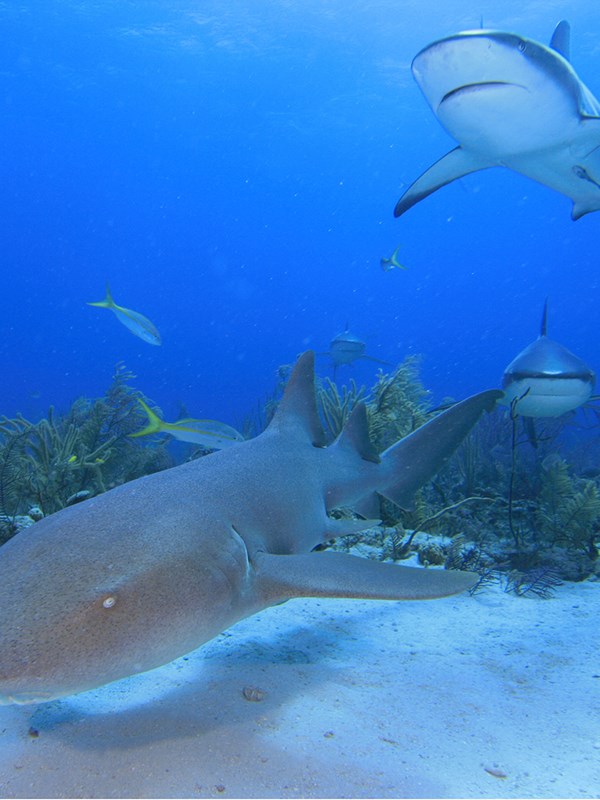
Nurse Shark
Scientific Name Ginglymostoma cirratum
Native To Tropical and sub-tropical Atlantic and eastern Pacific
Habitat Coral reefs, seagrass flats and rocky areas
Diet Fish, shrimp, squid, shellfish and coral
Size and Age 2.3-3 m (7.5-9.75 ft) in length; average lifespan of 25 years (under human care)
Natural History
Nurse sharks are slow-moving bottom-dwellers that are mostly harmless to humans. They have very strong jaws filled with thousands of tiny, serrated teeth, and will bite defensively if stepped on or bothered by divers who assume they’re docile.
They use their strong jaws to crush and eat shellfish and even coral, but prefer to dine on fish, shrimp, and squid. They are gray-brown and have distinctive tail fins that can be up to one-fourth their total length. Unlike most other sharks, nurses are smooth to the touch.
Conservation Status
Current wild population trends are unknown. Nurse sharks are vulnerable to the shark-fin market, which has become a multibillion-dollar industry. Fishermen catch sharks—only to cut-off their fins, and then throw them back in the sea.
Interesting Facts
- During the day, nurse sharks rest on the ocean floor and may be found in groups of up to 40.
- Nurse sharks are nocturnal hunters; they use their heavy bodies and blunt snouts like bulldozers to flip over rocks and corals to locate prey such as stingrays, crustaceans, and molluscs.
- Once a nurse shark locates its prey, it is then captured by powerful suction from its mouth.

